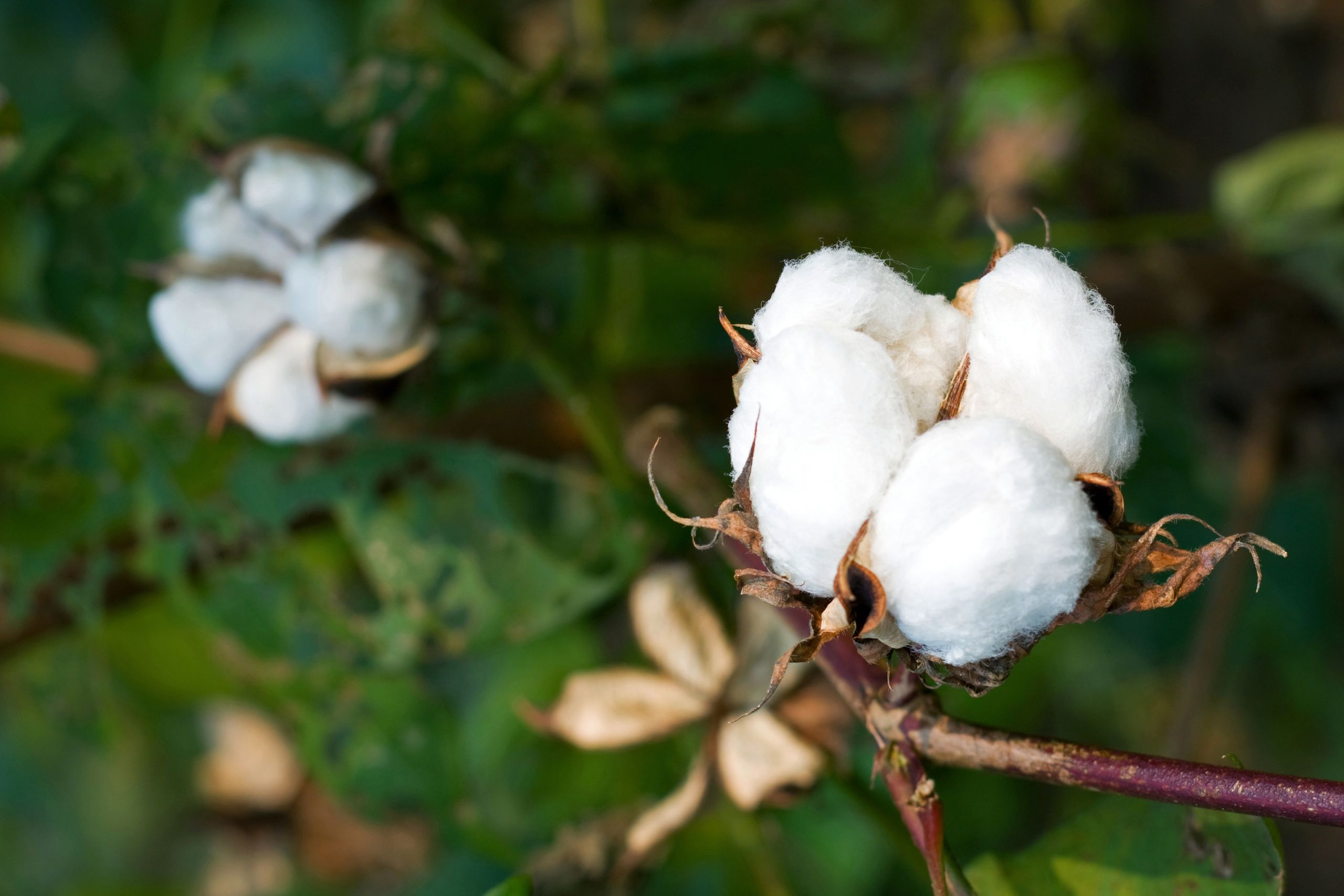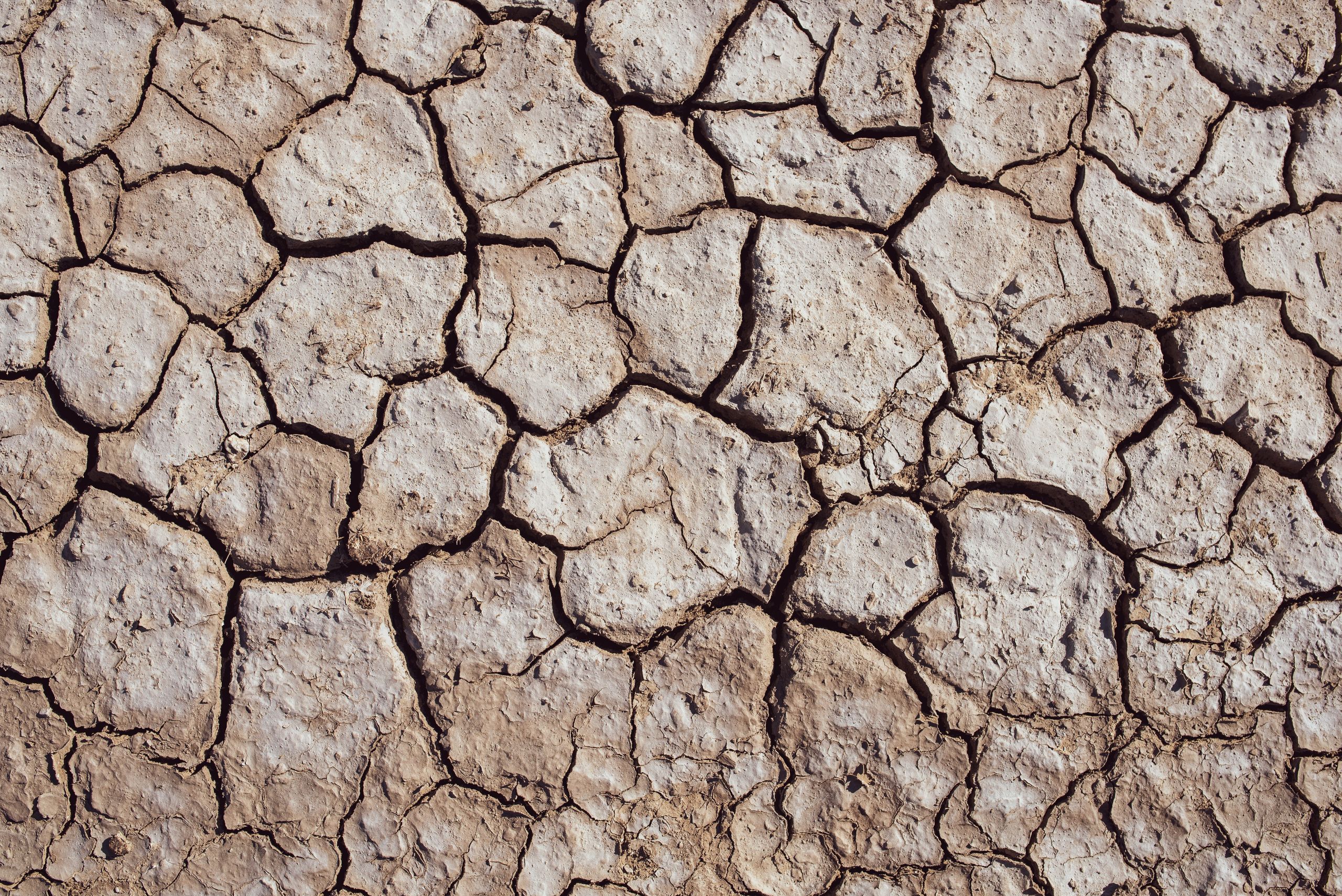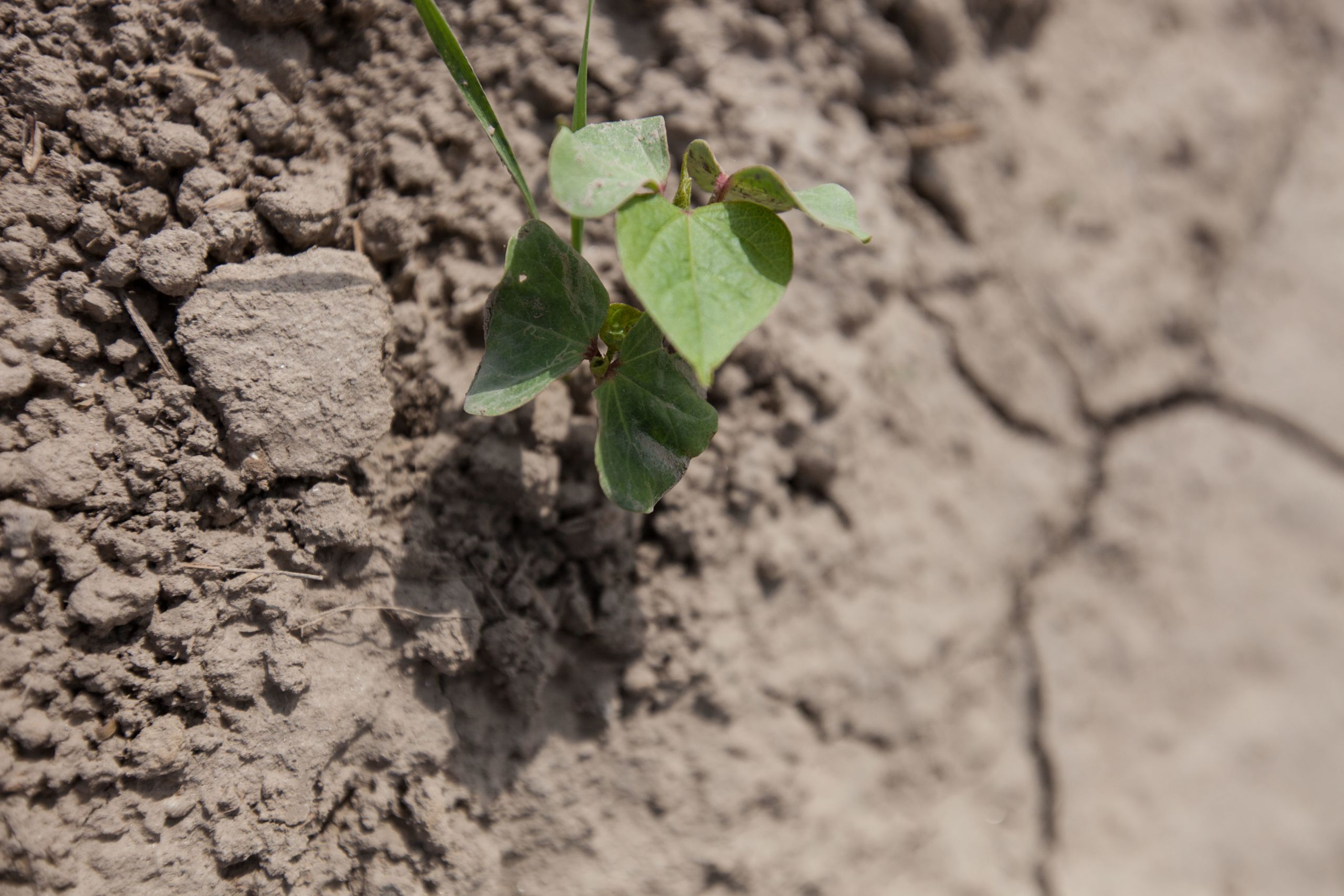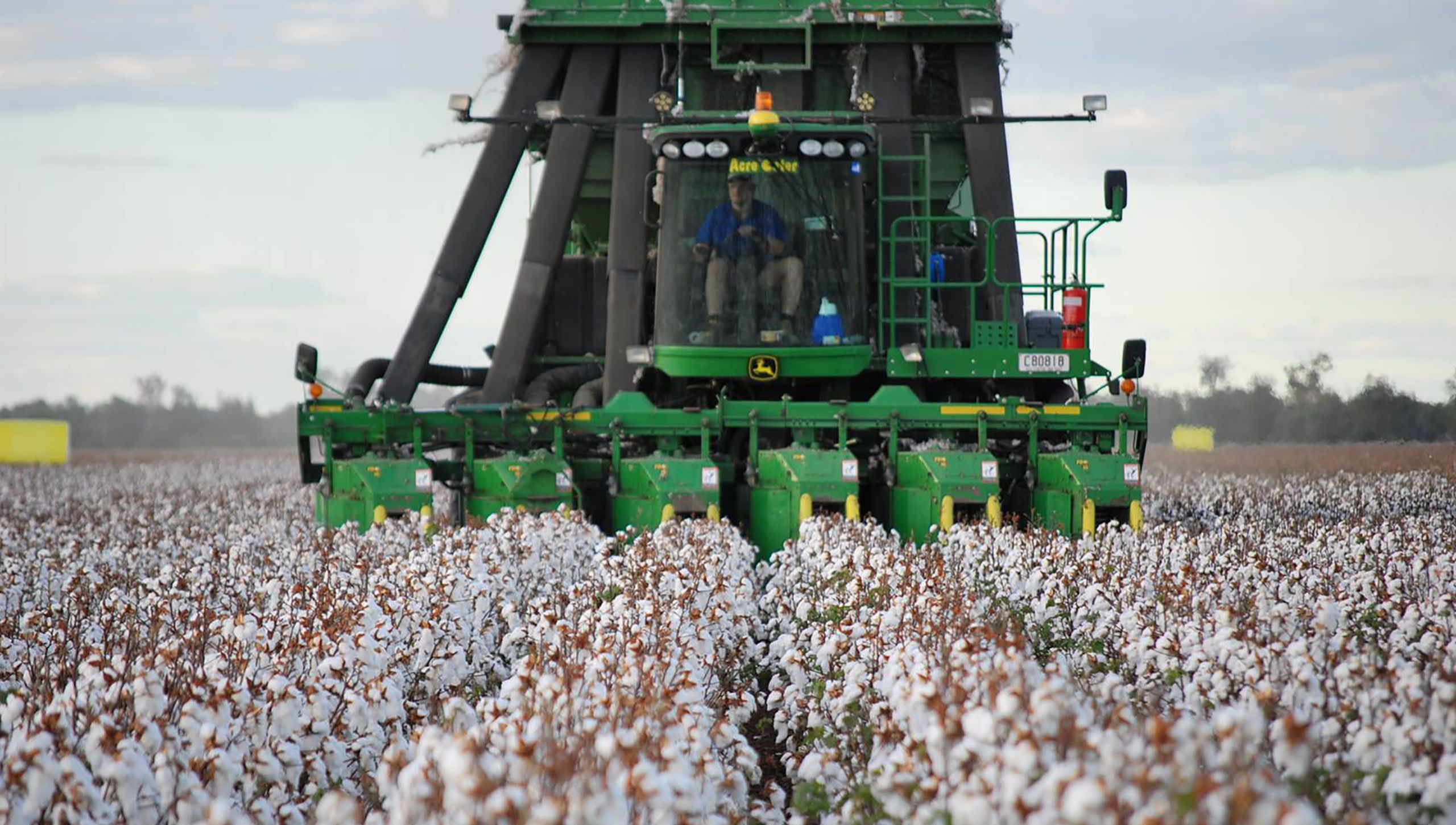Towards Climate Resilience Series
Helping Better Cotton Farmers to Adopt Sustainable Agricultural Practices
in the Face of Extreme Weather

Climate change is a real and pressing challenge for cotton farmers worldwide, from the large, mechanised farms of the US and Australia to the millions of smallholders in countries including India, China and Madagascar. Extreme or irregular weather, prompted by climate change, heightens the risk of poor cotton yields and low fibre quality, with cotton farmers facing risk of increased costs and lower profits, and even loss of livelihood. Farmers in developing countries are often the worst affected, with many lacking access to the knowledge, finance or equipment they need to protect their crops.
As part of its commitment to supporting the UN’s Sustainable Development Goal 13 on Climate Action, Better Cotton supports more than 1.5 million farmers across the world in adapting to extreme weather. We seek to strengthen their ability to increase their yields and profits despite the changing climate. Growing cotton in a way that respects the environment is also a natural climate solution – a proven, cost-effective way of storing and reducing carbon emissions in nature, including in agricultural lands, forests, grasslands and wetlands.
Through the Towards Climate Resilience series, over the next three months we will explore how Better Cotton Farmers across the world are taking action to build their resilience to extreme weather and reduce their own carbon footprint. We will begin our journey in Australia and continue on to the cotton fields of China and Madagascar.
“Farmers across the world are on the front line of climate change, facing tough challenges on a daily basis. Learning to withstand the effects of extreme and unpredictable weather means undertaking a challenging, ongoing journey of improving agricultural practices, and there is still much to do.”
How Extreme
Weather Affects
Cotton Growing

Low rainfall, extremely high temperatures or heat waves can lead to drought conditions and insufficient water for healthy cotton growth. Although cotton is generally a drought-tolerant plant, dehydrated plants — pushed beyond their capacity to cope with dry conditions — may shed their cotton bolls before the harvest, depleting farmers’ yields. Meanwhile, a lack of water can also bring new pest problems (some insects, such as aphids, feed on plants’ natural juices), as pests move from plants damaged by lack of water to feed on cotton instead.
Changes in seasonal winds can lead to wind blowing for longer periods, causing more soil erosion, (wearing away of the nutrient-rich top layer of soil), which in turn deprives cotton plants of the vital nutrients they need to grow and increases the need for applying additional fertilisers, which raises the cost of growing cotton for farmers.
Rain falling at irregular times can disrupt the growing stages of cotton, creating greater unpredictability. To benefit from dry sowing conditions, cotton farmers may opt to sow seeds earlier or later than usual, exposing their plants to unsuitable weather later in the season.
Heavy rainfall can create flood risks and trigger problems including soil erosion and weed or pest infestations, particularly in regions where pests thrive in more humid conditions. Sudden, heavy downpours can wash away seeds (forcing farmers to re-sow) or pesticides (prompting more applications), or even devastate an entire crop.
How Better Cotton is Supporting Farmers in Adopting Sustainable, Climate-Resilient Practices

Researching Climate Risks and Developing Best Practice Guidance
Better Cotton works with scientists and agricultural experts at universities and agronomic institutes to understand the effects of extreme or irregular weather in countries where Better Cotton is grown. Preventing climate change and building farmers’ capacity to cope with extreme weather are central to Better Cotton’s Principles and Criteria (seven principles that Better Cotton Farmers adhere to so that they can grow cotton in a way that is measurably better for the environment and farming communities). In particular, Better Cotton Farmers are encouraged to focus on improving water quality and availability; caring for soil health, plants, trees and wildlife on their farms; and restoring degraded soils and vegetation, while protecting non-agricultural lands.
Sharing Knowledge and Promoting a Structured Training Approach
Our field-level partners, who are responsible for training Better Cotton Farmers around the globe, help farmers to understand the challenges posed by extreme weather, adopt sustainable practices and implement the Better Cotton Principles and Criteria on the ground. At a global level, we are encouraging knowledge exchange between our field-level partners in diverse production countries. For example, our Australian partner, Cotton Australia, is currently sharing its knowledge on protecting cotton crops from drought with Better Cotton Farmers in Pakistan.
Monitoring and Measuring to Better Understand the Needs of the Crop
Better Cotton promotes a robust approach to monitoring and measuring everything from weather conditions to water use, soil health and the number of pests present on crops. These practices help farmers better understand the needs of the crop so they can plan interventions. In Australia , for example, Better Cotton Farmers are combining satellite images of their crops with local weather data to predict exactly how much water to apply on a particular day.

Encouraging Better Cotton Farmers to Prevent or Lessen the Negative Impacts of Extreme Weather
Better Cotton supports its field-level partners to adapt their training programmes to help farmers prevent and mitigate negative impacts from Climate Change. Through the Towards Climate Resilience series, we will find out how Better Cotton Farmers in China are learning to use sticky traps for pests, ahead of heavy rainfall. While in Madagascar, Better Cotton Farmers are building stone ridges across their cotton plots to help retain rainwater and prevent soil erosion.
Conserving Natural Resources
Conserving and optimising the use of natural resources, such as water and energy, is an important way of protecting cotton crops in the face of water scarcity and other challenges created by extreme weather. For example, in Australia, Better Cotton Farmers are taking steps to use resources more efficiently by employing high-technology precision irrigation and solar-powered water pumps.
What’s Happening at a Broader Level
Our efforts to support Better Cotton Farmers in the face of climate change supports a broader picture of activity by governments, scientists, agricultural experts and NGOs to understand the effects of climate change on cotton growing and develop policies, technologies and strategies to help cotton farmers become more resilient to climate change. We’ll highlight examples through the Towards Climate Resilience series.


